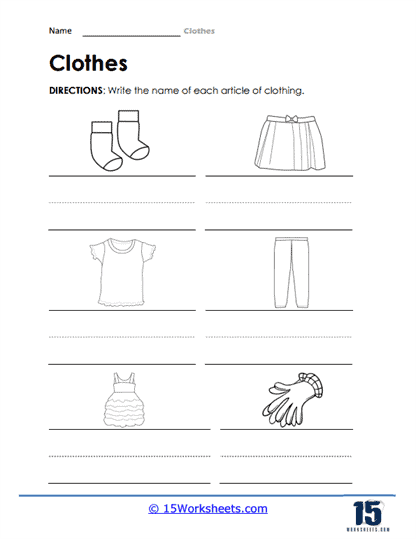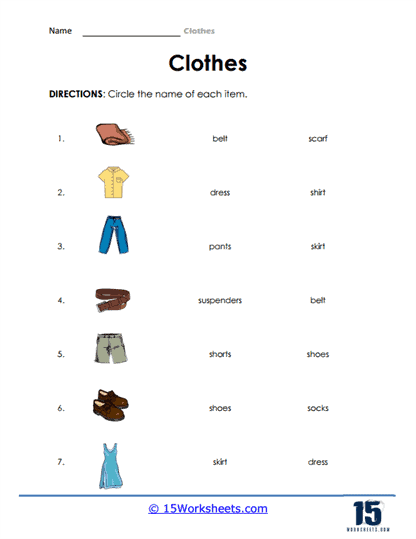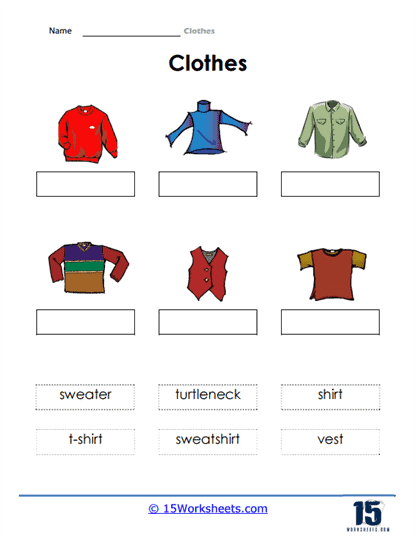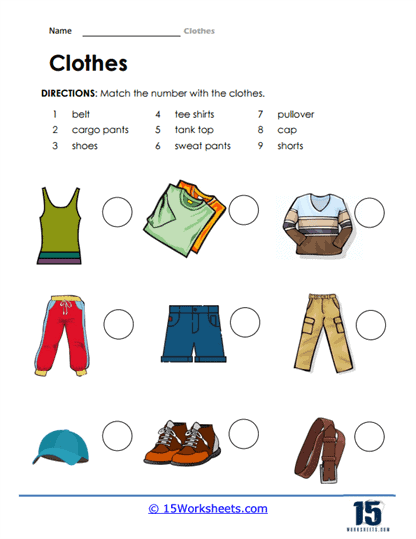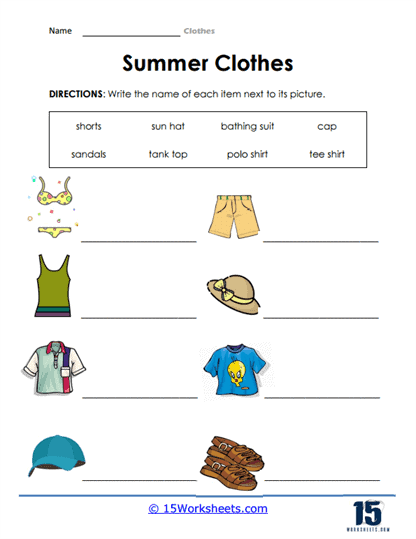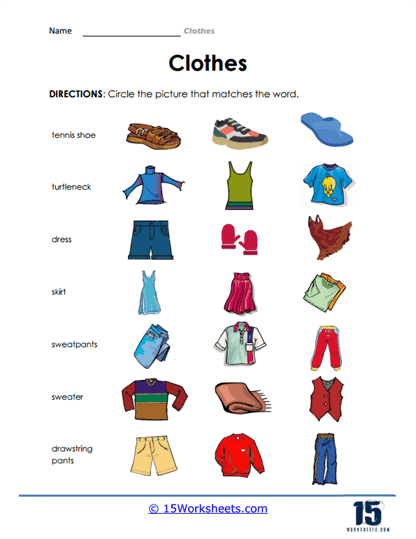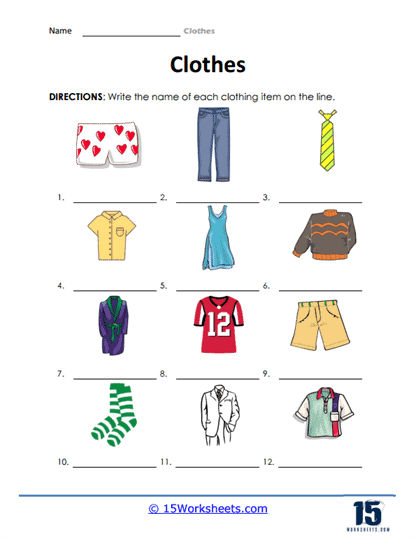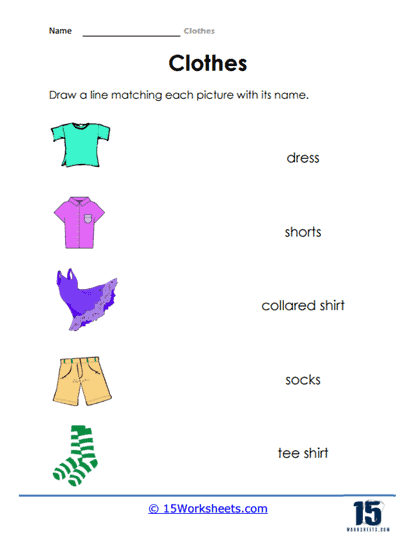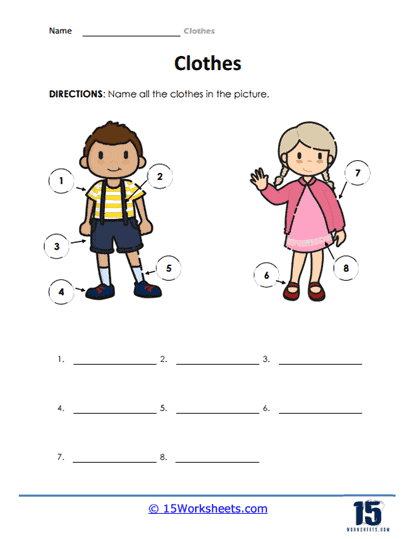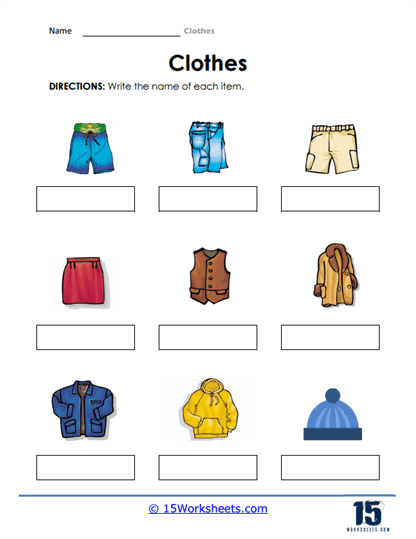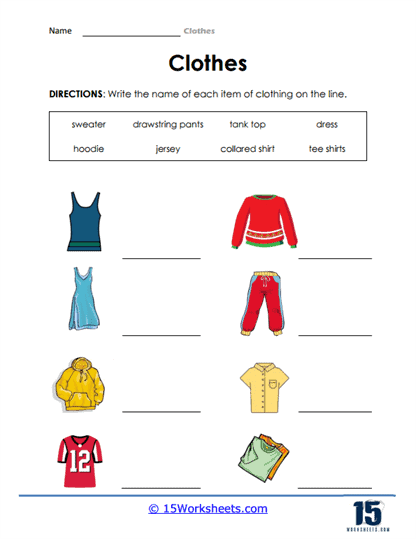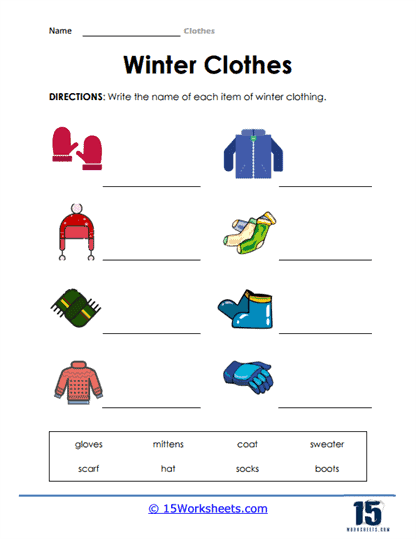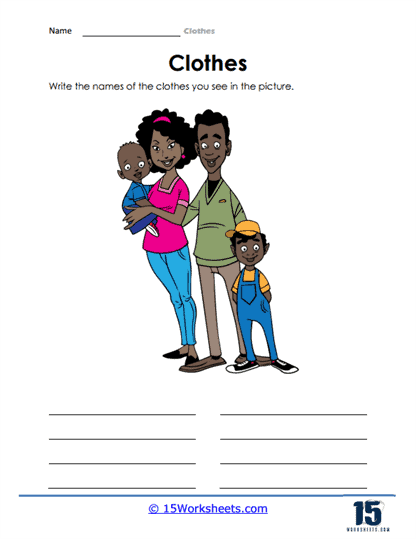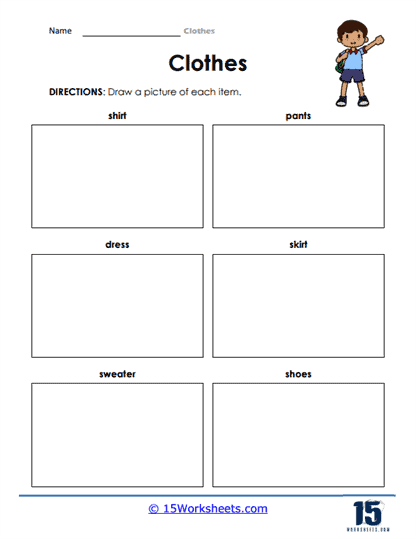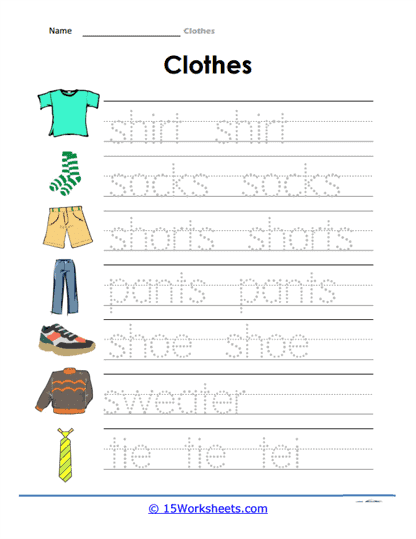Clothing Worksheets
All About These 15 Worksheets
This series of 15 worksheets is designed to help students learn and practice the names of various articles of clothing. These exercises aim to reinforce students’ understanding of different types of clothing and their associated vocabulary. Through these worksheets, students will:
- Write the names of various articles of clothing, which develops their vocabulary and spelling skills;
- Match the name for different articles of clothing using pictures as visual clues, which develops their visual recognition skills and reinforces their understanding of clothing vocabulary;
- Name all the articles of clothing shown in pictures;
- Draw pictures of different articles of clothing, which also develops their creativity;
- And trace the names of different articles of clothing, which improves their handwriting skills and reinforces their understanding of clothing vocabulary.
Overall, these worksheets provide a variety of exercises to help students learn and practice clothing vocabulary. By completing these exercises, students can improve their vocabulary, visual recognition, handwriting, and creativity skills, while also gaining knowledge of the different types of clothing.
Teaching Students the Names of Clothes They Wear
Teachers can use many ways to entertain the class when teaching clothes names. Many children may be familiar with the names of some objects they might be wearing. Teachers must ensure that students know the names of the basic day-to-day clothes they wear and that there is no confusion between the names of any clothes.
Here is a step-by-step guide on teaching clothes names to children. For this lesson, we advise bringing a few different types of clothes familiar to the children, such as leggings, socks, shirts, undershirts, dresses, and pants. If you don’t have clothing items on hand, you can also carry out the lesson by showing students pictures of clothing items from the internet.
1. First, start by telling students that they will learn clothes names today.
2. Now, you can pick up one clothing item, such as a sock, and ask students for its name.
3. Once they answer, tell them the name by spelling out the word.
4. We recommend repeating these steps a few times by using different clothing items until you have covered all the essential clothing items.
5. Next, bring up a few students, point toward their clothes, and ask the class about the names of the different clothing items they are wearing.
6. You can also test the student’s understanding of the names of different clothing items by mimicking a clothing store seller.
7. Tell a few students to come up to you and ask to buy one of their favorite clothing items.
With this easy step-by-step process, you can quickly teach students the names of different clothing items.
Clothing Vocabulary
Clothing choices can vary based on factors such as age, personal style, culture, and climate. However, there are common types of clothes that boys and girls typically wear. Here’s a list of some everyday clothing items for both genders:
- T-shirts – Casual, comfortable shirts with short sleeves, usually made of cotton or a cotton blend.
- Long-sleeve shirts – Shirts with long sleeves, available in various styles, such as casual, dressy, or sporty.
- Sweaters – Warm, knitted garments worn on the upper body, made from materials like wool, cotton, or synthetic fibers.
- Hoodies – Casual sweatshirts with a hood and a front pocket, often made of soft, warm materials.
- Jeans – Durable pants made of denim, available in various fits, colors, and styles.
- Shorts – Short pants that come in different materials, such as cotton, denim, or athletic materials, and are suitable for warmer
weather. - Leggings – Tight-fitting, stretchy pants usually made of a comfortable, elastic fabric.
- Skirts – A garment that hangs from the waist and covers all or part of the legs, available in various lengths and styles.
- Dresses – One-piece garments that cover the upper body and extend down to cover the legs, ranging from casual to formal styles.
- Trousers or slacks – Pants made of materials like cotton, wool, or synthetic fibers, available in various cuts and styles, suitable for casual or formal occasions.
- Coats and jackets – Outerwear designed to provide warmth and protection from the elements, available in different styles, materials, and levels of insulation.
- Undergarments – Clothing worn under other clothes, such as underwear, undershirts, or bras.
- Socks – Foot coverings made from various materials, available in different lengths and thicknesses.
- Shoes – Footwear designed for various purposes, such as athletic shoes, sandals, boots, or dress shoes.
Keep in mind that clothing preferences can be highly individual, and children may wear any combination of these items based on their unique tastes, needs, or cultural norms.

